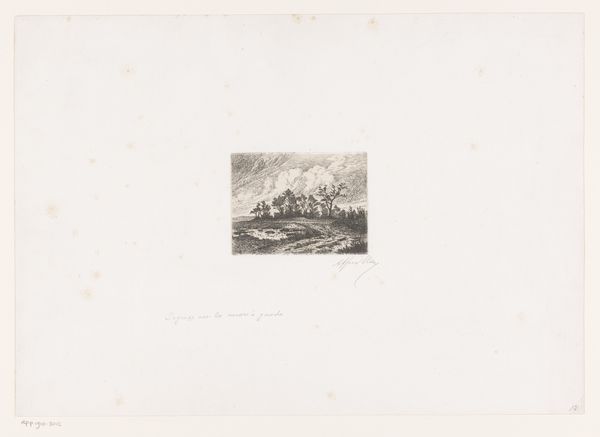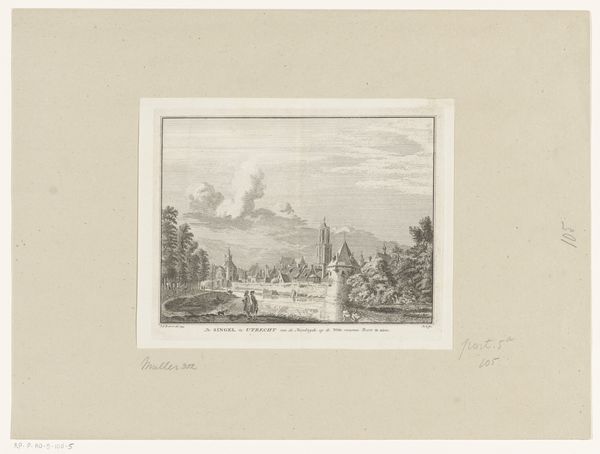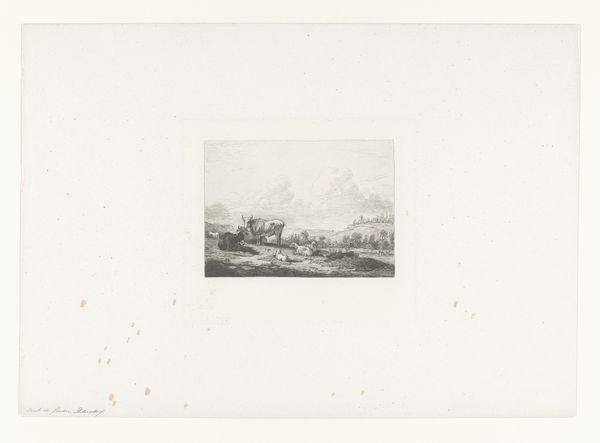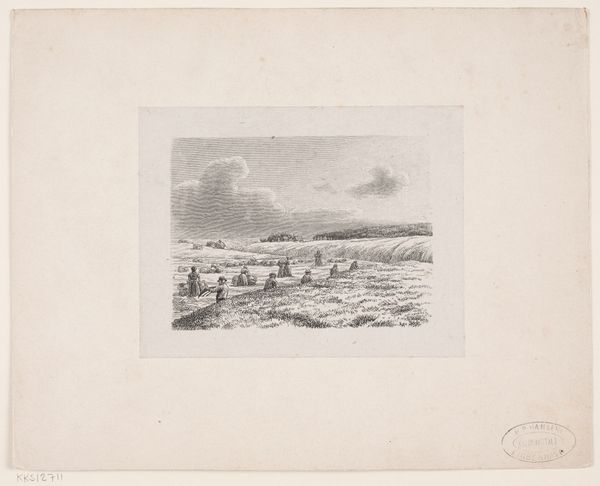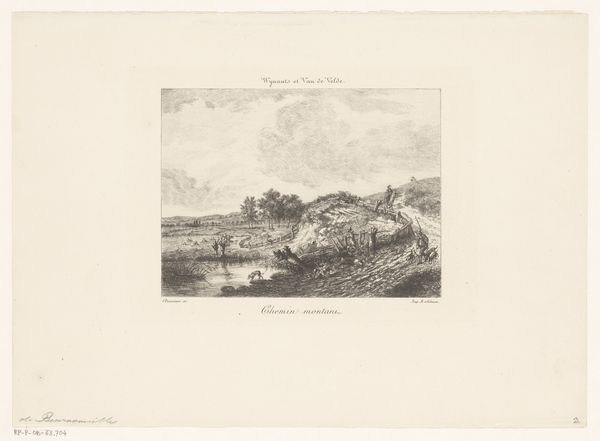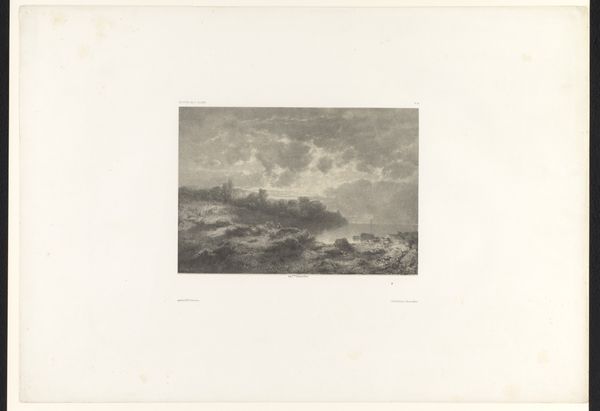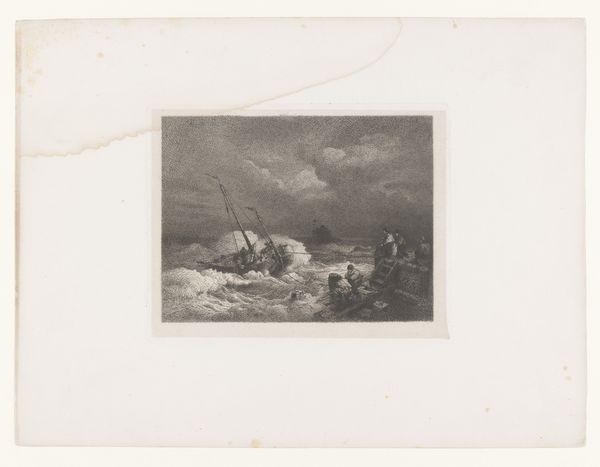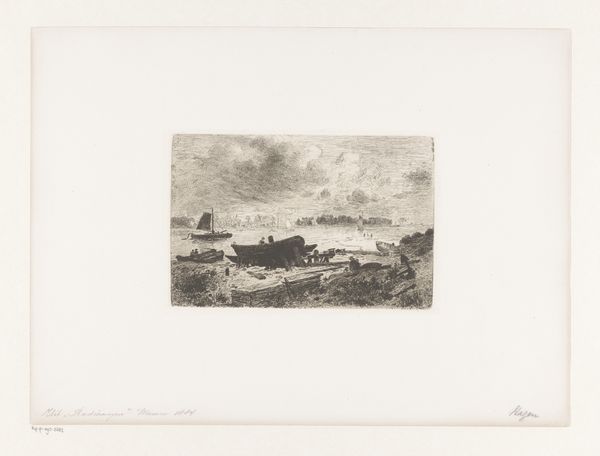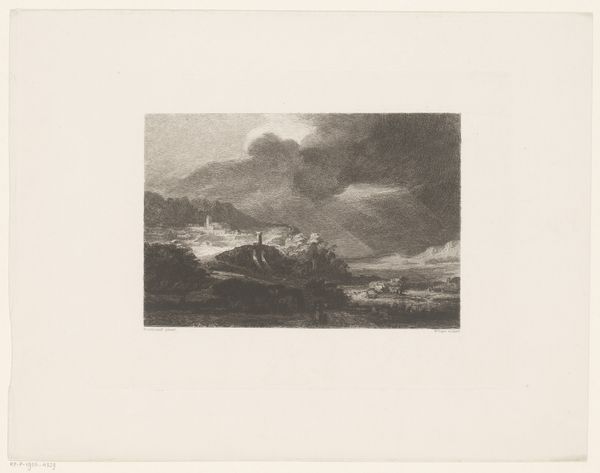
Gezicht op het strand van Scheveningen met figuren 1840 - 1895
0:00
0:00
print, engraving
# print
#
landscape
#
genre-painting
#
engraving
#
realism
Dimensions: height 112 mm, width 145 mm
Copyright: Rijks Museum: Open Domain
Curator: This is Alfred Alexandre Delauney’s "View of the Beach at Scheveningen with Figures," dating somewhere between 1840 and 1895. It’s currently held here at the Rijksmuseum. Made using an engraving technique, which really captures the mood so well. Editor: Yes, a muted yet bustling scene, almost like a photograph faded by time, despite its origin as a print. It's visually fascinating to see a moment of everyday life rendered with such precise, if somber, detail. What can you tell me about the historical context? Curator: Certainly. The scene depicts Scheveningen, a Dutch coastal town. This engraving offers a glimpse into the socioeconomic landscape of the mid-19th century—particularly around gender and labour—if you notice the arrangement of men working on the ships in the back compared to women grouped more near the houses and vendors. The division of labour speaks volumes about that era. Editor: Indeed. The very composition emphasizes the distinct spheres of activity, and my eye is drawn to that contrast. Then look at the cultural resonance of the clothing they are wearing. Notice how these repeat as visual and symbolic elements? Curator: Precisely! Each repetition tells a part of the cultural memory from the coastal communities. Even the little dog running around near the center gives this little feeling of hope between a quite divided town, if you will. Editor: And the way light is handled - almost highlighting figures while obscuring their faces keeps me fascinated and almost scared. The ambiguity makes one consider what everyday person would feel during those times. Curator: It encourages us to ask who has agency in shaping that visual narrative, considering their location within a coastal city. Editor: Exactly. The light helps elevate and make other question their place in such environment, making them seem closer to god and hell. This piece opens dialogue with broader sociopolitical questions on how place changes human identity. Curator: In thinking more critically about identity within places and spaces of life, that dog might feel like one of the only hopeful pieces to bring cultures together! Editor: Yes! A very useful visual study from the coastal regions of the time, which are often only reserved to the wealth. Thank you for sharing the political landscape to which it brings.
Comments
No comments
Be the first to comment and join the conversation on the ultimate creative platform.

